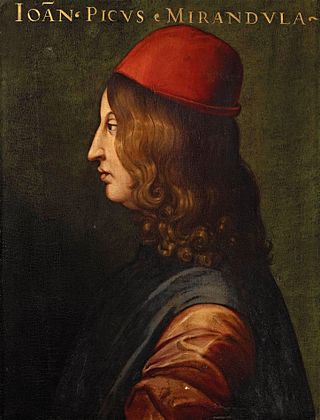
Giovanni Pico dei conti della Mirandola e della Concordia, known as Pico della Mirandola, was an Italian Renaissance nobleman and philosopher. He is famed for the events of 1486, when, at the age of 23, he proposed to defend 900 theses on religion, philosophy, natural philosophy, and magic against all comers, for which he wrote the Oration on the Dignity of Man, which has been called the "Manifesto of the Renaissance", and a key text of Renaissance humanism and of what has been called the "Hermetic Reformation". He was the founder of the tradition of Christian Kabbalah, a key tenet of early modern Western esotericism. The 900 Theses was the first printed book to be universally banned by the Church. Pico is sometimes seen as a proto-Protestant, because his 900 theses anticipated many Protestant views.

Muzio Attendolo Sforza was an Italian condottiero. Founder of the Sforza dynasty, he led a Bolognese-Florentine army at the Battle of Casalecchio.

Giovanni Francesco Pico della Mirandola (1470–1533) was an Italian nobleman and philosopher, the nephew of Giovanni Pico della Mirandola. His name is typically truncated as Gianfrancesco Pico della Mirandola.
Astorre Manfredi was an Italian condottiero. He was the son of Giovanni Manfredi, who had been lord of Faenza and other castles in the area before the Papal reconquest. Astorre lived for a while in Pistoia after his father had lost his last possession in Romagna; three years after the latter's death, in 1375, he managed to recover Granarolo.
Antonio I Ordelaffi was lord of Forlì from 1433 to 1436 and again from 1438 to 1448. He was a member of the noble family of Ordelaffi.
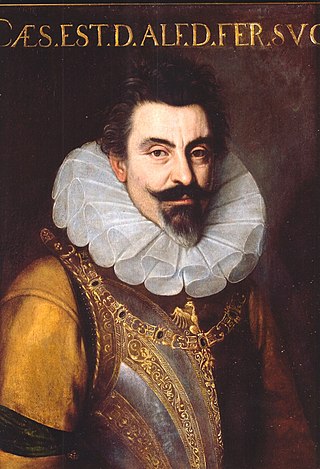
Cesare d'Este was Duke of Modena and Reggio from 1597 until his death.

Niccolò III d'Este was Marquess of Ferrara from 1393 until his death. He was also a condottiero.

The Lordship, then County, Principality and finally Duchy of Mirandola was a state which existed in Northern Italy from 1310 until 1711, centered in Mirandola in what is now the province of Modena, in Emilia-Romagna, and ruled by the House of Pico.

Galeotto I Pico della Mirandola was an Italian condottiero and nobleman, Signore of Mirandola and Concordia. He was noted by contemporaries for his tyranny. The son of Gianfrancesco I Pico, Galeotto initially allied himself to the Duchy of Ferrara, first fighting for Duke Borso d'Este and then Ercole I d'Este, with whom he formed a strong bond. In 1486, he switched allegiance to Ludovico Sforza, Duke of Milan. He fought his brother Antonio for the Signoria of Mirandola. He was ultimately successful in the last battle, taking his brother's place in 1491, which was reaffirmed two years later. He died in 1499 and was succeeded by his son Giovanni Francesco.

Caterina Pico (della Mirandola) (1454 – 5 December 1501) was an Italian noblewoman.
The Mirandola witch trials took place in Mirandola in the Duchy of Mirandola between 1522 and 1525. It resulted in the death of ten people, who were burned alive at the stake for witchcraft on the square.

The Mirandola mint, also known as the mint of the Pico della Mirandola, was the mint of the Duchy of Mirandola.

Francesco Maria Pico, also known as Francesco Maria II Pico della Mirandola to distinguish him from his father, was an Italian nobleman, third Duke of Mirandola and fourth Marquis of Concordia.
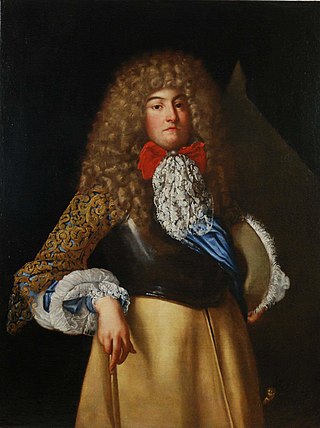
Alessandro II Pico della Mirandola was an Italian nobleman, soldier and patron of the arts, second Duke of Mirandola and third Marquis of Concordia from 1637 until his death.

Brigida Pico della Mirandola was an Italian noblewoman, Princess Regent of Mirandola and Concordia for fifteen years, in the name and on behalf of her nephew Francesco Maria II Pico della Mirandola, whose grandfather was her brother Alessandro II Pico della Mirandola. She ruled despotically with a policy that led to the fall of the Duchy of Mirandola.
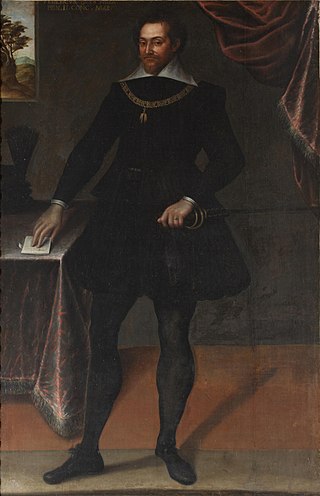
Federico II Pico della Mirandola was an Italian nobleman, last Count of Mirandola and Concordia (1592-1596) and first Prince of Mirandola and Marquis of Concordia (1596-1602).
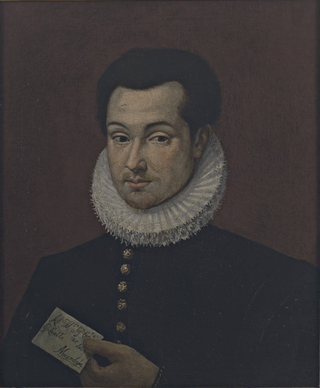
Galeotto III Pico della Mirandola was an Italian nobleman, third Count of Mirandola and Concordia from 1568 to 1592, the year of his abdication due to health problems in favour of his brother Federico II Pico della Mirandola.

The siege of Mirandolain 1321, also known as the siege of Duke Passerino, was a military conflict involving Francesco I Pico, first lord of Mirandola, against Rinaldo dei Bonacolsi, better known as Duke Passerino, lord of Mantua.

The siege of Mirandola in 1355, was a military conflict involving Francesco II Pico, first lord of Mirandola, against Bernabò Visconti.
Francesco II Pico della Mirandola was an Italian condottiero and nobleman, belonging to the House of Pico, who in 1354 regained the family domains of Mirandola and Concordia, which had fallen into the hands of the Gonzagas, and was lord of them until his death (1399).















